Recent Posts
Flooded Home? We Can Help | SERVPRO of Seattle Northeast
9/22/2024 (Permalink)
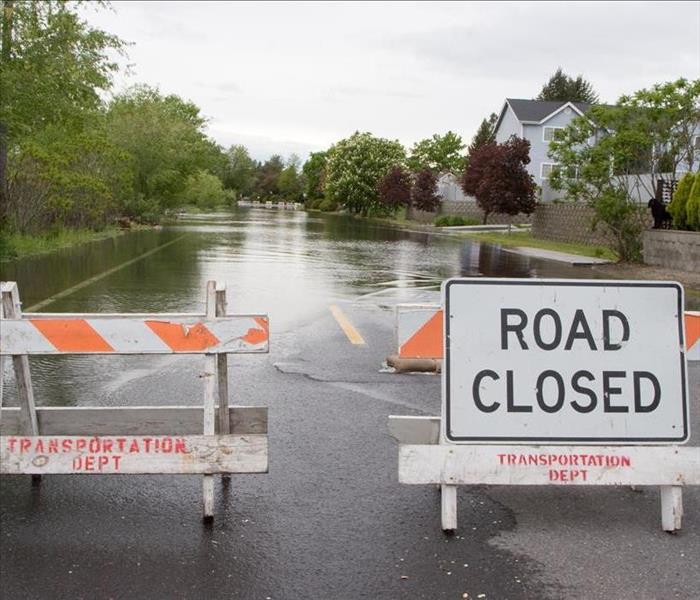 Floods can cause major damage to your home! Contact SERVPRO of Seattle Northeast for fast and efficient restoration.
Floods can cause major damage to your home! Contact SERVPRO of Seattle Northeast for fast and efficient restoration.
The Seattle area is surrounded by water, and while we love this aspect of our dynamic community, it can also be troubling from time to time. Rising water levels, flooded streets and even heavy rain can create dangerous flood concerns for our neighborhoods.
Runoff from storms or rising water levels can quickly impact our basements or even higher levels in our homes if the situation is severe enough.
Knowing what to do during a flood situation can help you stay prepared, and knowing who to call afterward can guarantee a complete recovery.
Responding to Flooding At Home
Floods can be large or small, but it is always frustrating to discover water where it shouldn’t be in your home. Floods could start due to something simple like an overflowing sink, or water can infiltrate your home during an intense storm that is raging outside.
In any case, try to stay out of the water as much as possible while you are dealing with the situation. Floodwater can be dangerous to handle or even toxic as it can pick up chemicals, storm runoff or even hazardous substances like sewage as it leaks onto your floor. The rush of water can also damage your electrical systems that could charge the water, making it dangerous or deadly to touch.
Stay high above the water line and get us on the phone right away. Our team will ask questions about the origin of the water as well as the current situation, and we will ask you to take photos of the damage you see. These images will become vital parts of your insurance claim process, but they also help us create a more robust recovery plan for you.
How We Will Remove the Water
Our first priority will be to identify where the water is coming from and address repairs or stop the flow of water however we can. Once your property is secure and the water has stopped flowing in, we can get started on your water extraction and repair process.
We try to work quickly, as the longer standing water is left in your home, the higher your risk of suffering from mold problems and structural integrity issues.
Once your space is dry and all of the standing water and lingering moisture has been removed, we can work toward your repairs. Water can quickly swell and warp wood, compromise drywall and soak through carpet, so we get right to work reversing this damage and rebuilding your home. When we are through, you would never know that a flood occurred on your property.
Floods can be serious situations. Call SERVPRO of Seattle Northeast for a quicker restoration.
Taking Cover for Severe Weather | SERVPRO of Seattle Northeast
6/22/2024 (Permalink)
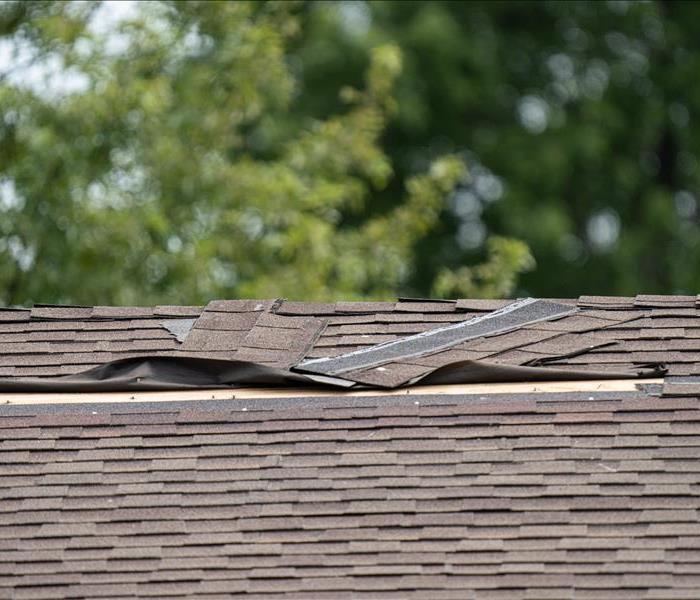 Has your home been hit hard by an unexpected storm? SERVPRO of Seattle Northeast is here for the rescue. Call us now!
Has your home been hit hard by an unexpected storm? SERVPRO of Seattle Northeast is here for the rescue. Call us now!
Storms can be intense in our community, bringing heavy rain, strong wind and lightning. While we are grateful to not see too many tornadoes in our area, the other storms can be just as dangerous.
We can’t prevent storms from rolling through the Seattle area, but we can all take steps ahead of time to stay safe while the weather rages overhead. Incorporate these tasks into your storm preparation plans so that you are always ready for the unexpected.
Getting Ready
The first thing you need to have is a reliable way to receive weather alerts. You may check the forecast each morning, but weather is unpredictable and can deteriorate quickly. Have at least two different ways of receiving alerts, with one being a method that doesn’t rely on electricity to work.
Now that you are ready to be alerted, it is important to have your emergency kit packed and your safe shelter location ready to use. Have a small bag packed with a first-aid kit, flashlights with extra batteries, your weather radio, chargers, shelf-stable food and any medication that your family needs to remain comfortable during this time. You should also make sure your sheltering location is clear and ready to use at a moment’s notice.
When the Storm Arrives
Make sure all your windows and doors are shut tight and then head to your sheltering location with your family. Don’t forget to bring your pets along!
Make sure the location you choose is far away from windows and in a lower, more interior part of your home. If there is a sturdy table or desk in the room, consider gathering underneath it to protect yourself if your home suffers significant damage.
Stay in your sheltering location as long as necessary and only leave when the alert expires and the weather moves on. Bring your phone and weather radio with you just in case so you can be informed of any new storm cells popping up. Use caution when walking around your home, as serious storms can cause serious damage.
The Recovery
Storms can follow very specific damage patterns, so your home may suffer far worse or far better damage than your neighbors across the street. Take photos of any damage you see, and walk carefully around broken glass, bent floorboards or unsteady walls. Get SERVPRO of Seattle Northeast on the phone right away!
Our storm restoration team will arrive as quickly as we can to start securing your home and addressing your damage. We will expertly lay tarp over your roof or board up broken windows while we get to work removing water and tackling your repairs.
We will help you recover faster because it is our goal to minimize disruption after storm disasters. You can always count on us when Mother Nature makes a big impact on your home.
A single storm can have devastating effects on your home. Call SERVPRO of Seattle Northeast today.
Suspect a Water Leak? Where to Look First | SERVPRO of Seattle Northeast
3/22/2024 (Permalink)
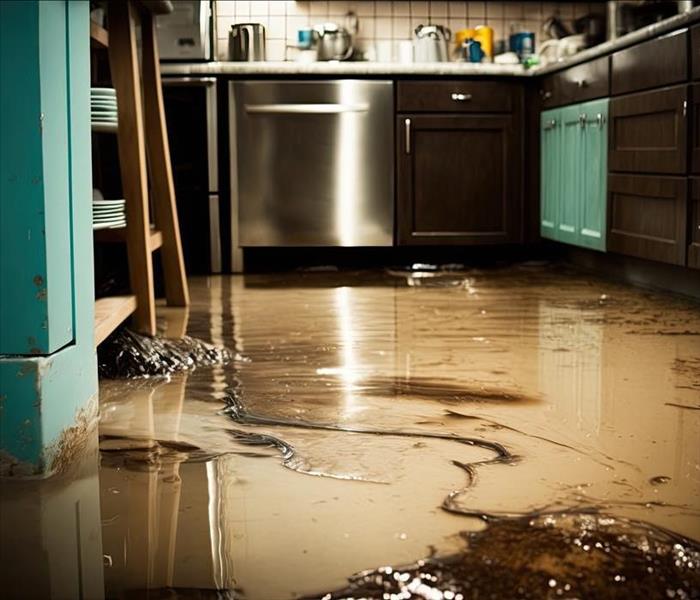 Leaky appliances are not something you should have to deal with alone. SERVPRO of Seattle Northeast is here to restore your home. Call us now!
Leaky appliances are not something you should have to deal with alone. SERVPRO of Seattle Northeast is here to restore your home. Call us now!
The days can get busy, and it can seem like you are running on autopilot most of the time running around in the morning getting your kids fed, dressed and out the door. So when you step into the bathroom to grab something and notice that your socks are now soaking wet, it can be pretty jarring. Is it a simple puddle or something more sinister?
Water leaks can happen at the most unsuspecting times, and they can cause serious damage behind your walls, under your floors and to your home’s internal structure if they are left to drip and leak. Knowing where they often start can help you stay in control and ready to take action.
Starting Your Investigation
One of the first places you should check is anywhere that leads to the outside. If there is a crack around a window or a door or a skylight was left open, water can easily get in and wreak havoc all over the place. You should also look at lesser-known areas like wiring holes or outlets.
If those spaces are dry, move on to the pipes in that particular room. If you have a sink, toilet or tub in that room, check each water line carefully for signs of wear and tear. A worn seal or loose connection could easily be the culprit.
Up Next: Appliances
Move on to your appliances if you are still coming up short. We all love our dishwashers and washing machines, but they can also be the source for frustrating and extensive water damage.
All it takes is a single electrical malfunction for your machine to overflow and spill all over your floor! If you start to notice a musty odor when you walk by your appliance, it’s time to pull it from the wall to check behind it.
Signs of moisture can be tricky around your appliances because leaks often happen behind or beneath your machines. When you pull them away from the wall, check for mold growth, water spots or visible puddles.
Where Our Team Comes Into Play
Once you track down the source of the problem, your next step is recovery! Responding quickly to water damage is essential to making sure your home doesn’t suffer further structural issues or become the home of a huge mold infestation. Our water damage restoration team is up to the task and is available 24/7 to help.
We will arrive right away to start drying up the water and to get to work fixing the source of the leak. Once the space is dry and secure, we can repair warped walls, change out ruined floorboards and replace soaked carpet. Our team will take care of your home from start to finish.
Don’t ignore signs of water damage. Call SERVPRO of Seattle Northeast right away.
Reliable Ways to Stop a Kitchen Fire | SERVPRO of Seattle Northeast
12/22/2023 (Permalink)
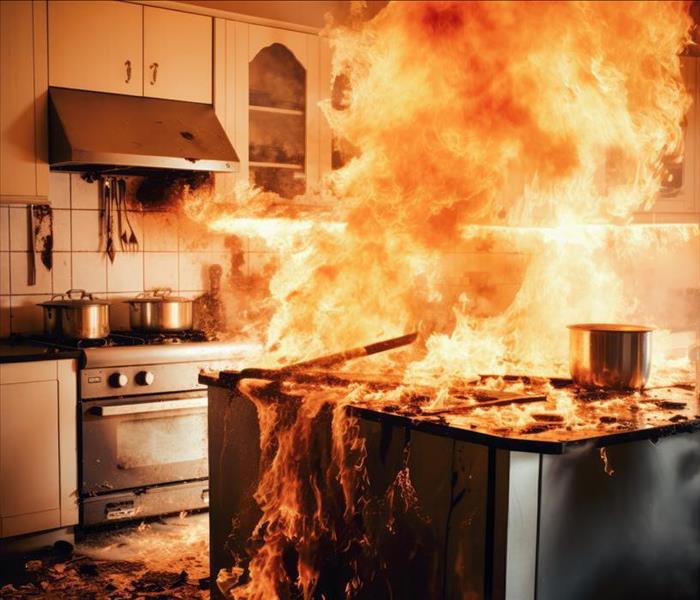 Has a sudden house fire left major damage to your home recently? SERVPRO of Seattle Northeast is Here to Help®. Contact us now!
Has a sudden house fire left major damage to your home recently? SERVPRO of Seattle Northeast is Here to Help®. Contact us now!
Whether you are a self-appointed chef or try to spend as little time in the kitchen as possible, we all have to eat. Baking, frying, boiling and sauteing are all common cooking methods, and they all rely on heat or flame in order to cook your food.
Because we are constantly using heat in our kitchens, it should be no surprise that the majority of house fires start in the kitchen. Experiencing a kitchen fire can happen to anyone at any time, so knowing what to do when one does break out can help you stay in control by extinguishing it quickly.
Preparing Your Space
The good news is that many kitchen fires are actually preventable. Preparing your space is one of the best ways to go about doing this. Make sure your stovetop and oven are cleaned regularly and that you are keeping flammable materials to a minimum. Keep pot holders, oven mitts and kitchen towels stored safely away until you need them.
You should also set out a pot or pan lid next to your stovetop. Even if you aren’t needing to use it in your cooking, having it nearby can help you take control of any wandering flames. If a fire does start in your pan, you can throw the lid over the pan and extinguish it immediately.
What to Do When a Fire Breaks Out
If the fire starts on your stovetop, use that lid to pop over the top of it to smother the flames. If the start starts in your closed oven, don’t open the door! Simply turn off the heat, keep the door shut and back away. Eventually the fire will run out of oxygen and will die down.
You can also use your fire extinguisher during an emergency situation if you know how to use it. Keep it in a central location so that it is easily accessible during a true emergency.
Just remember, water and grease can be a really dangerous combination. Never use water to put out a grease fire as it can make the situation worse or cause a dangerous flareup to happen. You always smother a grease fire.
Once the Fire Is Out
Either you put the fire out yourself or you called 911 and the fire department did it for you. Either way, you will now be faced with the frustrating realization that you have to restore your home. Let our team handle the entire process for you!
We know how stressful it can be to recover from a serious disaster like a house fire, so we work with you every step of the way to make sure you are informed and aware of the changes and repairs that are taking place. We will remove damaged debris, clean and sanitize the space, and tackle any necessary reconstruction needs. Our team can even tear down and rebuild certain areas of your home if needed.
Even small kitchen fires can have a large impact. Call SERVPRO of Seattle Northeast today.
All About Mold: Signs of an Infestation | SERVPRO of Seattle Northeast
12/22/2023 (Permalink)
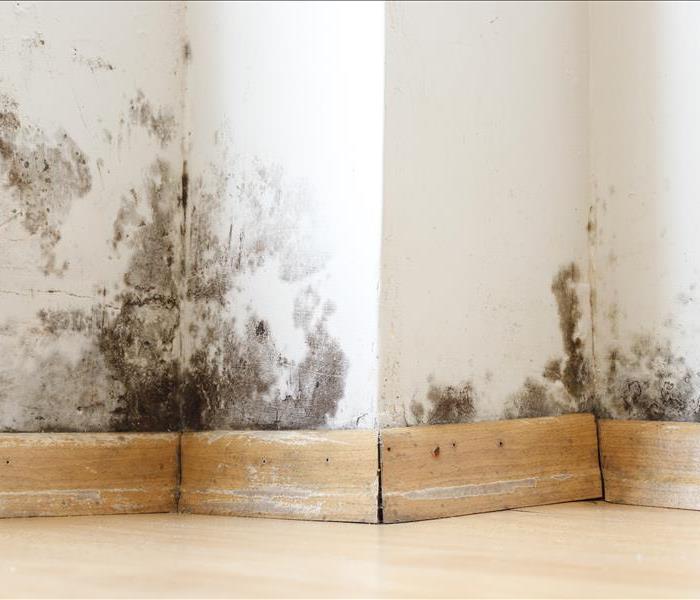 We know that home mold can be disastrous. That’s why we have a team of experts who can quickly restore. Call SERVPRO of Seattle Northeast now!
We know that home mold can be disastrous. That’s why we have a team of experts who can quickly restore. Call SERVPRO of Seattle Northeast now!
Even just the word mold can send many people reeling. It is an unpleasant part of our reality, and it can become a huge issue in our homes if we are not careful.
Unfortunately, mold infestations are a common complaint in our community, especially during the rainy season when we are surrounded by a lot more moisture on a daily basis.
Knowing what to do if you suspect a mold infestation is crucial to catching it early! The longer mold lingers in your home, the worse the situation can become—and it can even become dangerous for your family.
Do All Homes Have Mold?
You might be surprised to learn that mold is found everywhere, both inside and outside. Mold spores are microscopic and can easily float in and out of your home without much cause for concern. The issues start when these spores find an environment that they like and then settle in to grow and spread.
Mold loves damp and dark environments, which makes places like attics, basements, crawl spaces and water catches around your appliances the perfect breeding grounds for stubborn mold colonies. Once mold spores start to grow and replicate, they can grow into a large colony in as little as 48 hours.
Signs of a Mold Problem
Mold can be any color of the rainbow and can have many different textures, but that doesn’t guarantee that you will discover it right away.
It can linger behind your walls or beneath your floors for a long time before it starts to spread to a visible area. If you start to notice that your walls are looking a little warped or discolored or notice a musty smell whenever you walk by the door to your basement, it may be worth some investigation.
If you do go on the hunt and find a mold colony, don’t panic! Simply step back and call us instead. Some mold types can be dangerous to inhale and disturbing a colony can release spores into the air. We can arrive at your home quickly to identify the type of mold and then get to work taking care of the problem.
Our Mold Remediation Process
After the mold has been identified, we will don any PPE that is necessary and then start containing the area. This includes sealing off the room, shutting vents and temporarily turning off your HVAC system to make sure any airborne spores can’t move around to other spaces. Then we will work on filtering the air and cleaning up the visible mold. We will give the entire area a thorough cleaning and sanitization.
We can also employ our deodorizers if the mold smell is particularly strong. Finally, our team will assess the cleaned area and determine if your home is in need of structural repairs.
The longer mold sits and grows, the higher the chance that your walls or floors sustained damage. We will restore and repair the entire area. Our team will make sure your home is clean and safe to reenter in no time at all!
You should always let a professional team handle a mold infestation. Call SERVPRO of Seattle Northeast right away.
We Have Your Business Covered | SERVPRO of Seattle Northeast
12/22/2023 (Permalink)
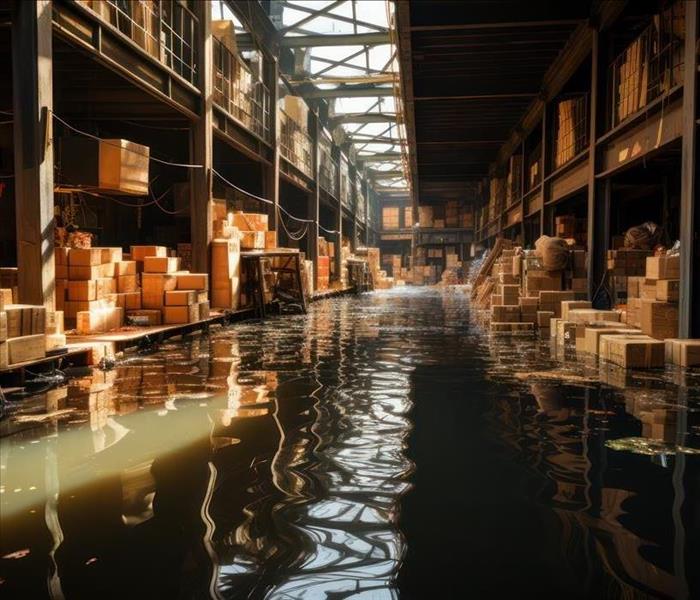 SERVPRO of Seattle Northeast is here for your commercial restoration needs. Don’t hesitate to contact us today!
SERVPRO of Seattle Northeast is here for your commercial restoration needs. Don’t hesitate to contact us today!
We know that the Seattle area wouldn’t be half as great without all of the wonderful and eclectic businesses that make up a large portion of our community. The coffee shops, restaurants, grocery stores and entertainment opportunities are endless, and we have amazing business owners like you to thank for that!
While we are grateful for your hard work and dedication to our community, we fully understand that being a business owner definitely extends the simple 9-5 lifestyle. All of that work can sometimes get overwhelming, which is where we come in.
SERVPRO of Seattle Northeast proudly offers our restoration and cleaning services to all of the businesses and commercial property owners in the area, including yours.
Recovering After Disaster
We are most well-known for our disaster recovery services, which is definitely a benefit for you when a natural disaster occurs or a storm rocks your business and causes serious damage. Our crew can be out on your property right away to get started on your restoration and we won’t stop until you are 100% satisfied with the final product.
We can also help you recover from manmade disasters. Breakroom fires, water leaks caused by clogged water lines or even a simple flooded warehouse due to a faucet being left on can all have serious impacts on your business if you aren’t quick to recover.
Did you know that up to 40% of businesses do not reopen after suffering certain disasters? That’s a lot of failed businesses that didn’t have to fail completely! Call us right away so we can create your recovery plan and get you back on track in no time at all.
Keeping Your Property Clean
While we all love and rely on our janitorial staff to keep our businesses clean on a daily basis, there often comes a time when a cleaning need goes beyond their scope of practice.
If your carpets need to be cleaned or your HVAC vents need a thorough scrubbing, you certainly shouldn’t have to spend your “off time” doing these tasks! We are also a full-service cleaning company that can handle any and all of your niche cleaning needs.
We have staff that can deep-clean your carpets, clean dirty upholstery and drapes and even tackle routine air duct cleanings. We are here to make sure your business sparkles and shines from top to bottom.
Tackling the More Sensitive Situations
As a responsible business owner, you probably have plans in place for more predictable situations like water leaks, fires or floods. However, you probably don’t have a plan for every possible disaster scenario. So when your business becomes the unfortunate scene of a crime, an employee suffers a serious injury or a sewage leak pops up unexpectedly, it might be overwhelming to figure out what to do first.
Situations like these should always be handled by professionals because biohazard substances can be dangerous or even deadly if they are mishandled. Blood and other bodily fluid cleanup always necessitates proper PPE, so let our biohazard cleanup crew handle your unexpected situations.
SERVPRO of Seattle Northeast is here for you no matter if a serious disaster strikes your business or if you need help with a major cleanup. Our crew will work hard to minimize disruption and help you make a full recovery day or night.
We are here to help you run a successful business! Call SERVPRO of Seattle Northeast for immediate commercial restoration assistance.
Preparing Your Seattle Home for Cold Weather: Protecting Against Water Damage
11/7/2023 (Permalink)
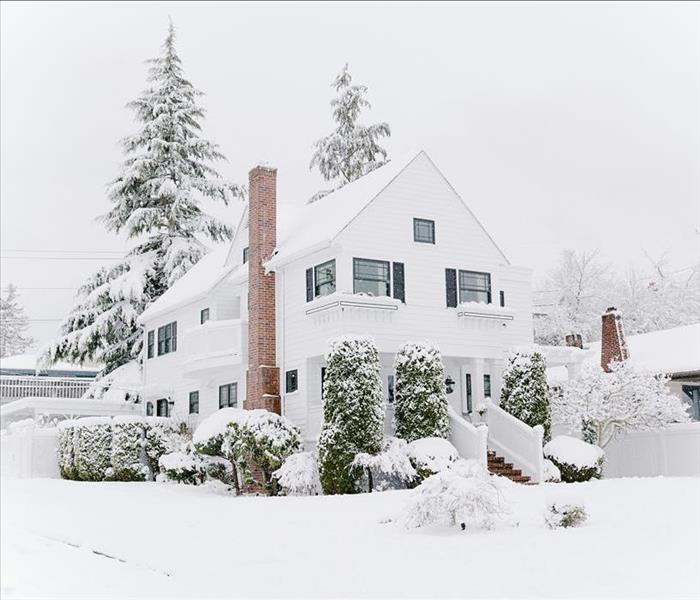 Seattle homeowners need to be prepared for the challenges that cold weather can bring, especially when it comes to water damage.
Seattle homeowners need to be prepared for the challenges that cold weather can bring, especially when it comes to water damage.
As winter approaches in the beautiful city of Seattle, homeowners need to be proactive in preparing their homes for the cold weather. While Seattle winters are relatively mild compared to some other parts of the country, they can still pose significant challenges to the integrity of your home, especially when it comes to water damage. In this blog, we'll discuss three essential steps that Seattle homeowners can take to get their homes ready for the cold weather, and how cold weather can lead to water damage.
Insulate Your Home
Seattle's chilly winters can cause heating bills to skyrocket if your home isn't adequately insulated. Inadequate insulation can lead to heat loss, which not only makes your home less comfortable but can also create conditions for water damage. Here's how:
a. Frozen Pipes: When the temperatures drop, poorly insulated pipes can freeze, and as the water inside expands, it can cause pipes to burst. This can lead to extensive water damage. To prevent this, make sure your pipes are properly insulated, and you can even leave your faucets dripping during particularly cold nights to keep water flowing.
b. Roof Leaks: Inadequate insulation in your attic can lead to heat escaping from your home, causing your roof to warm up. When snow on your roof melts, it can create ice dams along the eaves, which can force water under your shingles, leading to roof leaks. Proper insulation and ventilation in your attic can help prevent this issue.
Check and Maintain Your Gutters
Rain is no stranger to Seattle, even during the colder months. As temperatures drop, the rainwater can freeze, leading to ice accumulation in your gutters. When ice builds up in your gutters, it can block the flow of melted snow and rain, causing water to back up under your roof, leading to leaks and potential structural damage.
To prevent this, homeowners should:
a. Clean Gutters: Before the cold weather sets in, make sure your gutters are clean and free from debris that could obstruct the flow of water.
b. Install Gutter Guards: Gutter guards can help keep debris out of your gutters, reducing the need for frequent cleaning.
c. Check for Leaks: Inspect your gutters for any signs of leaks or damage. Repair or replace damaged sections to ensure proper drainage.
Protect Against Condensation
Condensation can be a hidden threat to your home during cold weather. When warm, humid air inside your home meets the cold surfaces of windows, doors, or walls, it can create condensation. Over time, this moisture can lead to mold growth, wood rot, and other forms of water damage. To protect your home against condensation:
a. Maintain Proper Ventilation: Use exhaust fans in kitchens and bathrooms to expel moisture, and make sure your home has proper ventilation to allow the moist air to escape.
b. Use Dehumidifiers: If your home is particularly humid, using a dehumidifier can help control moisture levels.
c. Seal Gaps and Cracks: Ensure that your home's envelope, including windows and doors, is properly sealed to prevent warm air from escaping.
Seattle homeowners need to be prepared for the challenges that cold weather can bring, especially when it comes to water damage. By insulating your home, maintaining your gutters, and protecting against condensation, you can ensure that your home remains cozy and dry throughout the winter months. Remember that preventing water damage is not just about avoiding costly repairs; it's also about safeguarding the comfort and safety of your loved ones during the chilly Seattle winters. So, don't wait – start preparing your home today!
5 Ways Cooking Poses a Fire Hazard at Home: Why You Should Contact SERVPRO of Seattle Northeast for Fire Damage Restoration Services
10/19/2023 (Permalink)
 Cooking-related fires are the leading cause of home fires in the United States.
Cooking-related fires are the leading cause of home fires in the United States.
Cooking is a daily necessity in our lives, but it can also pose significant fire hazards in our homes. According to the National Fire Protection Association (NFPA), cooking-related fires are the leading cause of home fires in the United States. While we all love to whip up delicious meals in our kitchens, it's important to recognize the potential risks and take necessary precautions to prevent kitchen fires. Let's explore five ways cooking can become a fire hazard at home and emphasize the importance of contacting SERVPRO of Seattle Northeast for fire damage restoration services in case of an unfortunate incident.
Unattended Cooking
Leaving cooking food unattended is one of the most common causes of kitchen fires. Whether it's frying, broiling, or baking, it's crucial to stay in the kitchen while cooking. A momentary lapse in attention can lead to overheated oil or burning food, quickly escalating into a dangerous situation.
Grease Fires
Cooking with oils and fats can be risky, as they can reach their ignition point and catch fire. Grease fires are particularly dangerous, as they can spread rapidly and cause extensive damage. Attempting to put out a grease fire with water can exacerbate the situation, making it crucial to use a fire extinguisher specifically designed for oil fires.
Flammable Materials
Many kitchen items are flammable or can catch fire easily. Paper towels, dish towels, wooden utensils, and even curtains are examples of items that can ignite if they come into contact with a hot stovetop or open flame. Keeping flammable materials away from the cooking area is essential.
Electrical Appliances
Electrical appliances, such as toasters, microwaves, and coffee makers, can malfunction or overheat, leading to fires. Regularly inspecting and maintaining these appliances can help reduce the risk. Additionally, avoid overloading electrical outlets, as this can also lead to electrical fires.
Inadequate Ventilation
Inadequate ventilation in the kitchen can lead to the buildup of smoke, grease, and cooking fumes, which can ignite if they come into contact with an open flame or high heat source. Properly maintaining and cleaning your kitchen's ventilation system is crucial for fire prevention.
Why Choose SERVPRO of Seattle Northeast for Fire Damage Restoration Services?
In the unfortunate event of a kitchen fire, it's essential to contact professionals who specialize in fire damage restoration. SERVPRO of Seattle Northeast has a team of experts experienced in handling fire-related emergencies. Here are some reasons to choose us for your fire damage restoration needs:
Rapid Response: We understand the urgency of fire damage situations and are available 24/7 to respond quickly to your call.
Professional Expertise: Our technicians are trained and certified to handle fire damage restoration, ensuring the best possible outcome.
State-of-the-Art Equipment: We use advanced equipment and techniques to clean and restore your property after a fire.
Comprehensive Services: We offer a wide range of services, from smoke and soot removal to structural repairs, to help you get your home back to its pre-fire condition.
Insurance Assistance: Dealing with insurance claims can be overwhelming, but we can help navigate the process and ensure you receive the compensation you deserve.
Cooking is an essential part of our daily lives, but it comes with inherent fire hazards. By staying vigilant, practicing safe cooking habits, and being prepared for emergencies, we can reduce the risk of kitchen fires. However, if a fire does occur, contacting SERVPRO of Seattle Northeast for fire damage restoration services is the best way to ensure your home is restored to its former glory. Don't wait until disaster strikes; be proactive in fire prevention and preparedness.
Winter is Coming: 3 Essential Home Preparations for Seattle Residents
9/29/2023 (Permalink)
 While Seattle may not experience extreme winter weather, it's still a good idea to have an emergency kit on hand.
While Seattle may not experience extreme winter weather, it's still a good idea to have an emergency kit on hand.
As the grey skies settle in and the temperature starts to drop, winter in Seattle brings its own set of challenges. From heavy rainfall to the occasional snowstorm, it's essential for residents to prepare their homes to withstand the season's rigors. Let's examine three key steps that Seattle residents can take to get their homes winter-ready while keeping SERVPRO® in mind for storm-related damage restoration.
Roof and Gutter Maintenance:
Seattle's frequent rain and occasional snow can put a strain on your home's roof and gutter system. To prevent leaks, water damage, and ice dams, it's essential to perform the following tasks:
- Inspect your roof for missing or damaged shingles and have them repaired promptly.
- Clean your gutters and downspouts to prevent blockages and ensure proper water drainage.
- Consider installing gutter guards to minimize debris buildup.
By maintaining your roof and gutters, you can reduce the risk of water intrusion and costly repairs during the winter months.
Weatherproofing Windows and Doors:
Proper insulation and sealing are critical in keeping your home warm and energy-efficient during the winter. Here's what you can do to weatherproof your home:
- Inspect windows and doors for gaps or drafts and seal them with weatherstripping or caulk.
- Consider upgrading to energy-efficient windows and doors to improve insulation.
- Use draft stoppers at the bottom of exterior doors to prevent cold air from entering.
Enhancing your home's insulation not only keeps you comfortable but also reduces heating costs during the chilly season.
Prepare an Emergency Kit:
While Seattle may not experience extreme winter weather, it's still a good idea to have an emergency kit on hand in case of power outages or severe storms. Your kit should include:
- Flashlights and extra batteries.
- Non-perishable food and bottled water to last for a few days.
- Blankets, warm clothing, and extra supplies for your family and pets.
- A battery-powered radio to stay informed about weather updates.
Having an emergency kit ready can provide peace of mind and ensure you're prepared for unexpected winter events. Check what else the National Weather Service includes in their recommended emergency kit list.
Seattle's winters may be milder compared to other parts of the country, but it's essential to prepare your home for the season's unique challenges. By maintaining your roof and gutters, weatherproofing windows and doors, and having an emergency kit at the ready, you can keep your home comfortable and safe during the colder months. However, if winter storms do cause damage to your home, remember that SERVPRO is here to help with storm-related damage restoration services. Contact SERVPRO for prompt and professional assistance, so you can enjoy a worry-free winter season in Seattle.
Spooktacular Seattle: 4 Hauntingly Fun Halloween Activities
9/20/2023 (Permalink)
 The Sorrento Hotel is reportedly one of the most haunted places in Washington!
The Sorrento Hotel is reportedly one of the most haunted places in Washington!
Halloween in Seattle is a time when the city's unique charm blends seamlessly with spooky festivities. From haunted houses to eerie events, there's no shortage of Halloween fun to be had. If you're looking to embrace the spirit of the season, here are five hauntingly enjoyable activities to consider in the Emerald City.
- Nightmare at Beaver Lake - Haunted House and Trail
Located in Sammamish, just a short drive from Seattle, the Nightmare at Beaver Lake is an annual Halloween event that promises a spine-tingling experience. This immersive haunted house and trail offer a chilling journey through dark forests and eerie landscapes, complete with creepy characters and unexpected scares. Whether you're a seasoned thrill-seeker or just looking for some heart-pounding excitement, this haunted attraction is a must-visit.
- Pumpkin Patches and Corn Mazes
For those seeking a more family-friendly Halloween adventure, Seattle offers a plethora of pumpkin patches and corn mazes. Locations like Carpinito Brothers Pumpkin Patch in Kent and Fox Hollow Farm in Issaquah provide a charming and scenic experience, with opportunities for pumpkin picking, hayrides, and navigating intricate corn mazes. It's a perfect way to celebrate the season with loved ones of all ages.
- Seattle Ghost Tours
Seattle has a rich history with its fair share of ghostly legends and haunted locales. Explore the city's spooky side by joining a guided ghost tour. These tours take you to places like the haunted Sorrento Hotel and Pioneer Square, sharing spine-tingling stories of the city's past. Whether you're a history buff or just love a good ghost story, these tours provide a unique perspective on Seattle's eerie history.
- Fremont Zombie Apocalypse
Every year, the quirky neighborhood of Fremont hosts a thrilling and unconventional Halloween event known as the Fremont Zombie Apocalypse. This outdoor experience features a horde of zombies and brave survivors navigating the streets, engaging in mock battles and survival challenges. Whether you choose to be a participant or a spectator, it's an unforgettable way to immerse yourself in the Halloween spirit.
Halloween in Seattle is a magical time when the city's vibrant culture meets the spooky allure of the season. Whether you're into haunted houses, pumpkin patches, ghost tours, or unique events like the Fremont Zombie Apocalypse, there's something for everyone to enjoy. So, don your costumes, grab your friends and family, and get ready for a spooktacular time in the Emerald City this Halloween!
 Floods can cause major damage to your home! Contact SERVPRO of Seattle Northeast for fast and efficient restoration.
Floods can cause major damage to your home! Contact SERVPRO of Seattle Northeast for fast and efficient restoration.






 24/7 Emergency Service
24/7 Emergency Service








